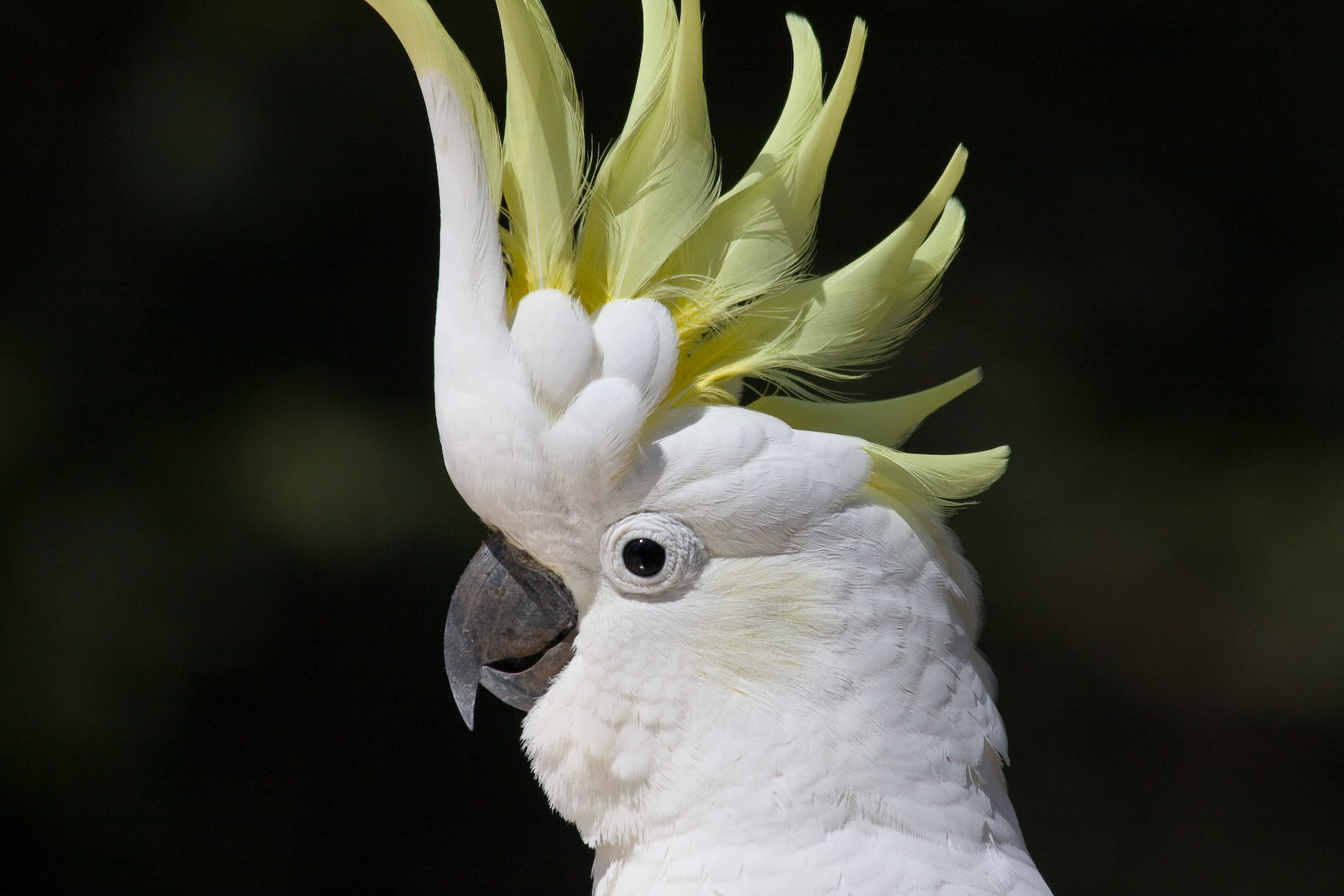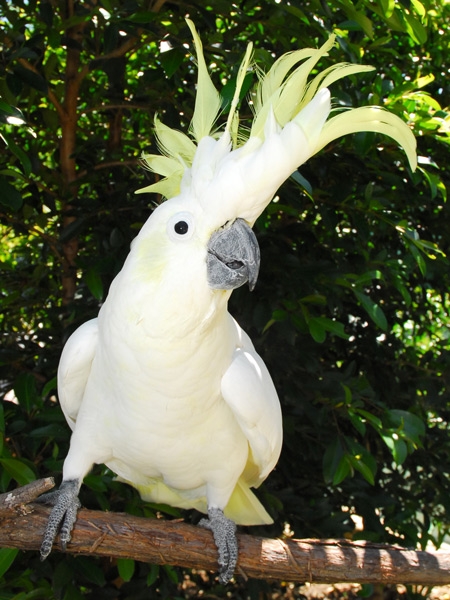
Cacatua galerita
SUBFAMILY
Cacatuinae
TAXONOMY
Psittacus galeritus Latham, 1790, New South Wales. Four subspecies.
OTHER COMMON NAMES
English: Greater sulphur-crested cockatoo, white cockatoo;
French: Grande Cocatoиs а huppe jaune; German: Grosser
Gelbhaubenkakadu; Spanish: Cacatъa Galerita.
PHYSICAL CHARACTERISTICS
19.7 in (50 cm); 1.5–1.8 lb (750–900 g). White plumage, yellow
crest on the head, blackish bill.
DISTRIBUTION
C. g. galerita: east and southeast Australia. C. g. fitzroyi: north
Australia. C. g. triton: New Guinea and adjacent islands. C. g.
eleonora: Aru Islands, Indonesia.
HABITAT
Lowlands and foothills; wide variety of forests and woodlands,
also lightly timbered grasslands, plantations, and urban parks
or gardens; favors forest margins and trees bordering watercourses,
but rarely within closed forest.
BEHAVIOR
Resident. Noisy, highly conspicuous; pairs or family parties in
breeding season, at other times in flocks, sometimes comprising
hundreds of birds. Wary; in open country “sentinel” birds
sit in treetops to warn feeding flock of approaching danger;
roosts communally, departing at sunrise to drink and fly to
feeding grounds, often at some distance; shelters in trees during
middle of day, resuming feeding in late afternoon and then
drinking before returning to roost.
FEEDING ECOLOGY AND DIET
Feeds on the ground and in trees, taking seeds, nuts, fruits,
blossoms, and insects and their larvae; will attack newly planted
and ripening grain crops, but destroys seeds of serious weed
pests.
REPRODUCTIVE BIOLOGY
Monogamous. Simple courtship display features raising of
crest, head bobbing, and swishing of head from side-to-side in
“figure 8” movement while uttering soft, chattering notes. In
south, breeding is from August to January, and in north from
May to September; nest is high up in a tree hollow, usually
near water; clutch of two or three eggs incubated by both sexes
for 27 days; chicks fed by both parents; fledging at about 70
days.
CONSERVATION STATUS
Generally common; locally abundant in east Australia; in 1990s
population estimated at more than 500,000. Listed on CITES
Appendix II.
SIGNIFICANCE TO HUMANS
Very popular cagebird; in New Guinea, yellow crest feathers
used in ceremonial headdress. Can damage grain crops.
Other popular Animals
Photo Gallery of - Sulphur-crested cockatoo




 Animalia Life
Animalia Life